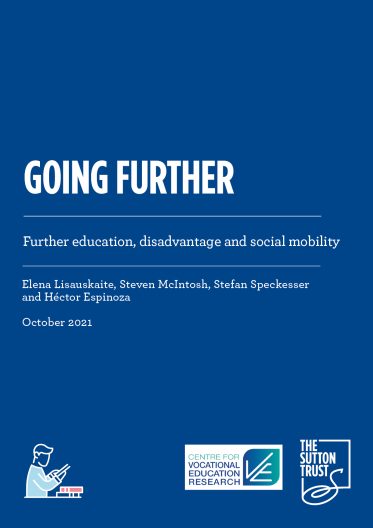Report Overview
The further education sector has an important role to play in social mobility. Young people from more disadvantaged backgrounds are much more likely to undertake further learning in the FE sector, rather than the traditional academic route of A levels and higher education. FE plays a key role between compulsory level schooling and HE, providing important vocational and technical skills needed by employers in the labour market, as well as providing a potential path to higher level study for those who have chosen not to go down the academic route.
This report, commissioned in partnership with the Centre for Vocational Education Research at the LSE and authored by Elena Lisauskaite, Steven McIntosh, Stefan Speckesser and Héctor Espinoza, examines various pieces of evidence relating to the relationship between FE participation and outcomes, such as access to well-paid employment and progression to higher education.
